Nara has many temples and shrines along with Kyoto. Nara, where the first capital of Japan was established, offers an ancient ambience that cannot be found in Kyoto. For example, there is one of the most famous temples, Todaiji Temple, and Nara Park is popular for its deer where you can touch them and feed them ”Shika-senbei 鹿せんべい (rice crackers for deer).”
However, in this article, I don’t want to tell you about such already-well-known sights. Today, I, from Nara, would like to introduce you to an area called Nara-machi, which is the outer Nara. By strolling around Nara-machi, I hope you will enjoy the unique atmosphere of Nara, which is different from that of mainstream Kyoto.
Nara-machi is located just to the east of Nara Park. It’s a former traditional merchant district where several traditional residential buildings (called “machiya”) and warehouses are preserved. These buildings are open to the public now. It is said to be “the oldest town in Nara,” and private houses from the 19th century are also preserved and still in use. Today, the narrow street is filled with Japanese sweets stores, a modern art museum, cool cafes, restaurants, boutiques, and ryokan (Japanese-style inns).
In 1998, when Gangoji Temple was registered as a (UNESCO) World Heritage Site as one of the “Cultural properties of Ancient Nara,” the surrounding streets were positioned as a buffer zone and became a famous place of Nara as “Nara-machi.” However, it is not widely known that a large part of this “Nara-machi” used to be the precincts of Gango-ji Temple.
My strolling route

I’ll share the route I enjoyed strolling with my friend this time. Before starting this tour, I will give a little information to you. You see red stuffed toys called “Migawari-saru 身代わり申 (Substitute Monkey)” hanging from the eaves of houses all over Nara-machi. They are meant to ward off evil, and are hung to keep misfortune from entering the house. Please try to pay extra attention to unique things like that on the street of Nara-machi and enjoy. Let’s go!
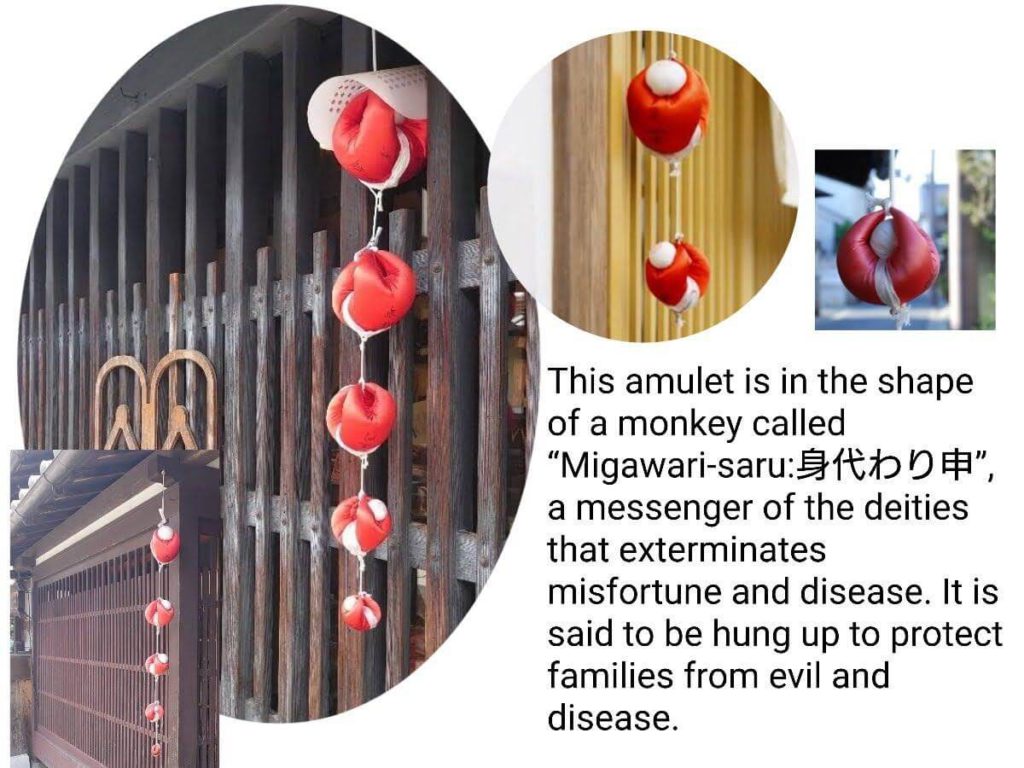
1. JR Nara station
I started to stroll from JR Nara station. In front of the station, there is a tourist information office. Many brochures and maps written in many languages are provided there. You should stop by there and pick up what you need.
☆Go walk on Sanjou street to the east. Keep going for a stroll for about 15 minutes. On the right, you can see…
2. Nakagawa Masashichi shouten: Nara-Sanjou shop 中川政七商店 奈良三条店

Nakagawa Masashichi Shoten boasts 300 years of history. The shop offers a wide variety of useful and beautiful daily commodities that make the most of Japanese traditions and craftsmanship. In particular, the Hanafukin, kitchen dish cloths made of mosquito net fabric, is considered one of Nara’s specialties and traditional industries and is one of the shop’s most popular products. I also love the Kaya-fukin cloth and regularly use it. When dry, it is crispy to the touch, but when wet, it is supple, soft, and durable. In addition, you can buy various kinds of souvenirs at this fun store. The main shop is in Nara-machi.
☆After this, you walk to the east for about 5 minutes. On the right, you can see…
3.Nakatani-dou 中谷堂
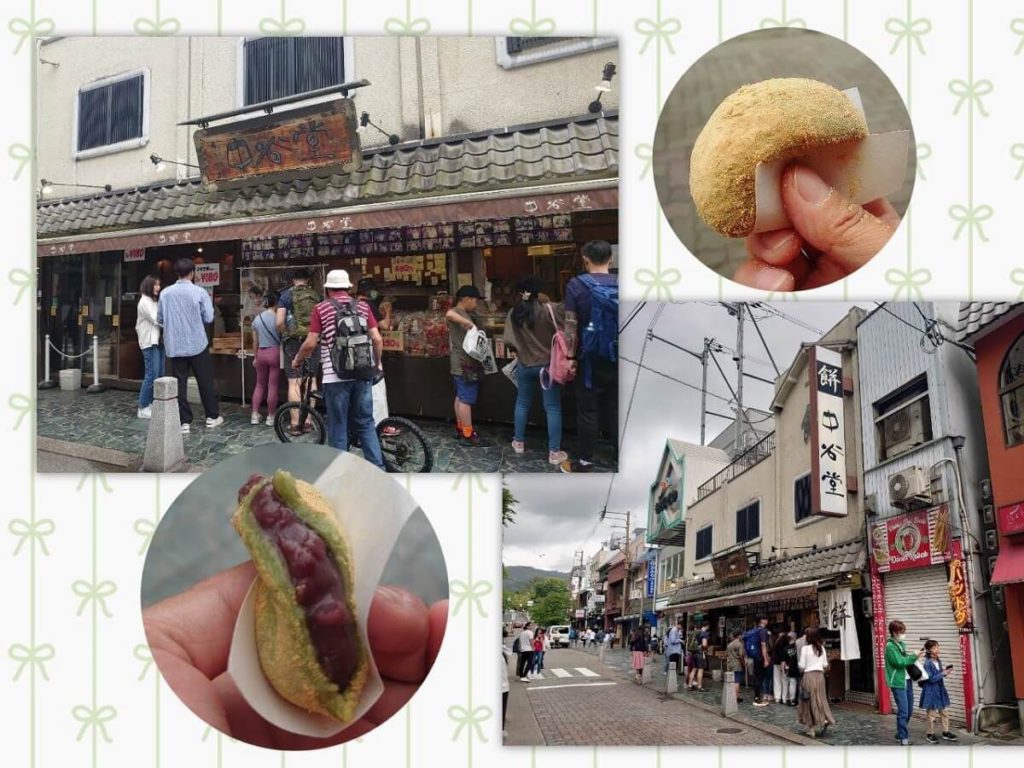
This is the popular yomogi, which is a Japanese mugwort, mochi shop. You can enjoy watching mochi shows, mochi being made by the cook from outside.
Nakatani-Do’s yomogi mochi is a dish that allows you to fully enjoy the flavor of yomogi, the sweetness of the bean paste, and the texture of the mochi. Everyone stops by this shop and buys a yomogi mochi to eat around.
NAKATANIDOU|Looking for Nara souvenirs, try our fresh yomogi mochi, pounded at high speed
☆After eating, turn right and go to the Mochiidono Center street もちいどのセンター街. If you see the place below, turn right.

After walking about 5 meters, on the right side, you can see…
4.Lafurufu らふるふ
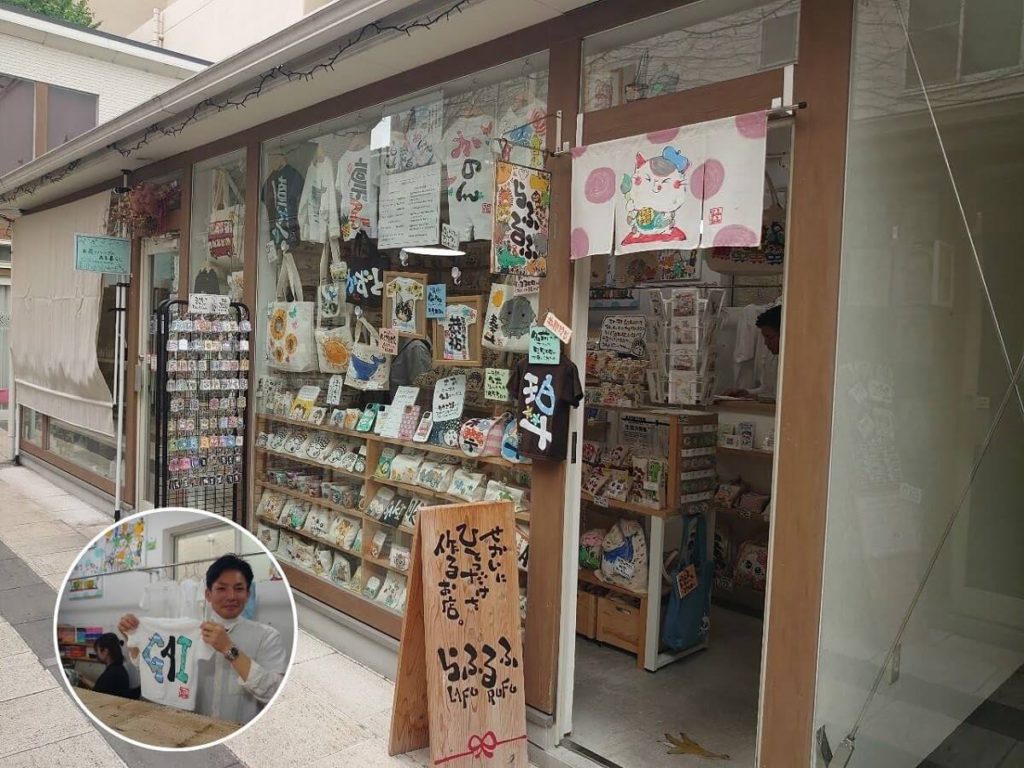

This shop has a variety of komono items with original designs, where some items were painted by the staff. All designs are really cute and colorful. You can order the shop to paint what you want, for example, animals, flowers, vehicles, fruits, your name, etc. I’m sure you’ll be satisfied to see what you ordered, when you see the finished product. Yes, you can get that one and only item you want at this cute shop.
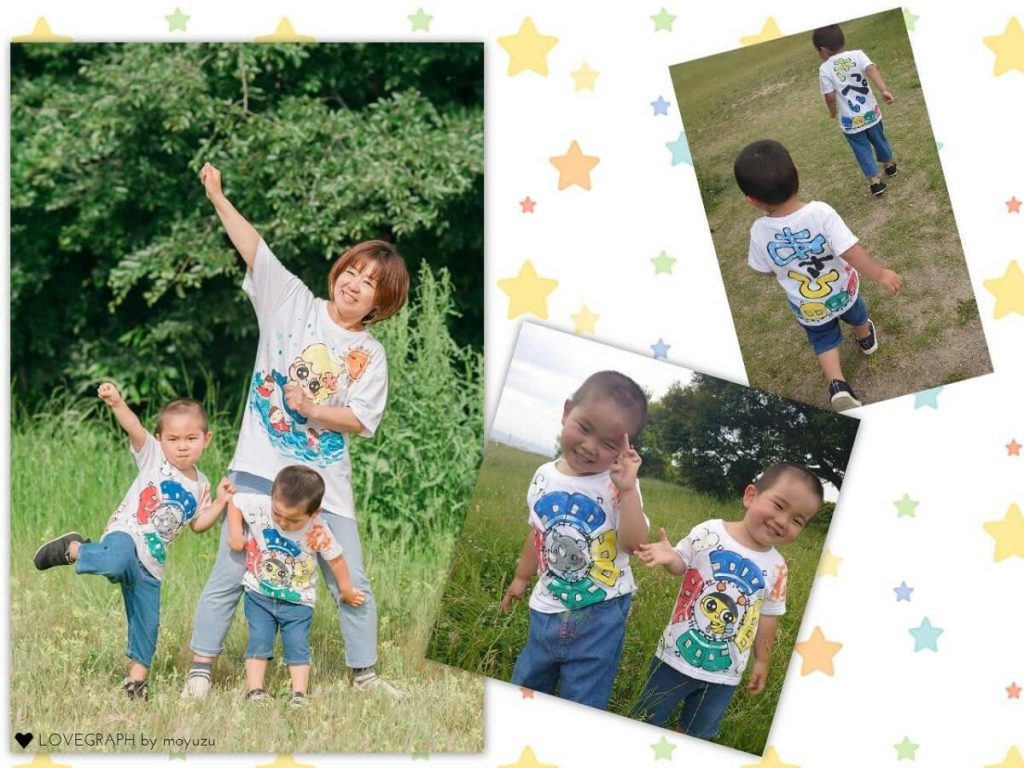
☆Go about 100m down a small alley beyond Mochiidono Center street till the T junction, turn right, and go down about 90m. The aroma of mellow tea should draw you to …
5. Tamura Seihouen chaho 田村青芳園茶舗
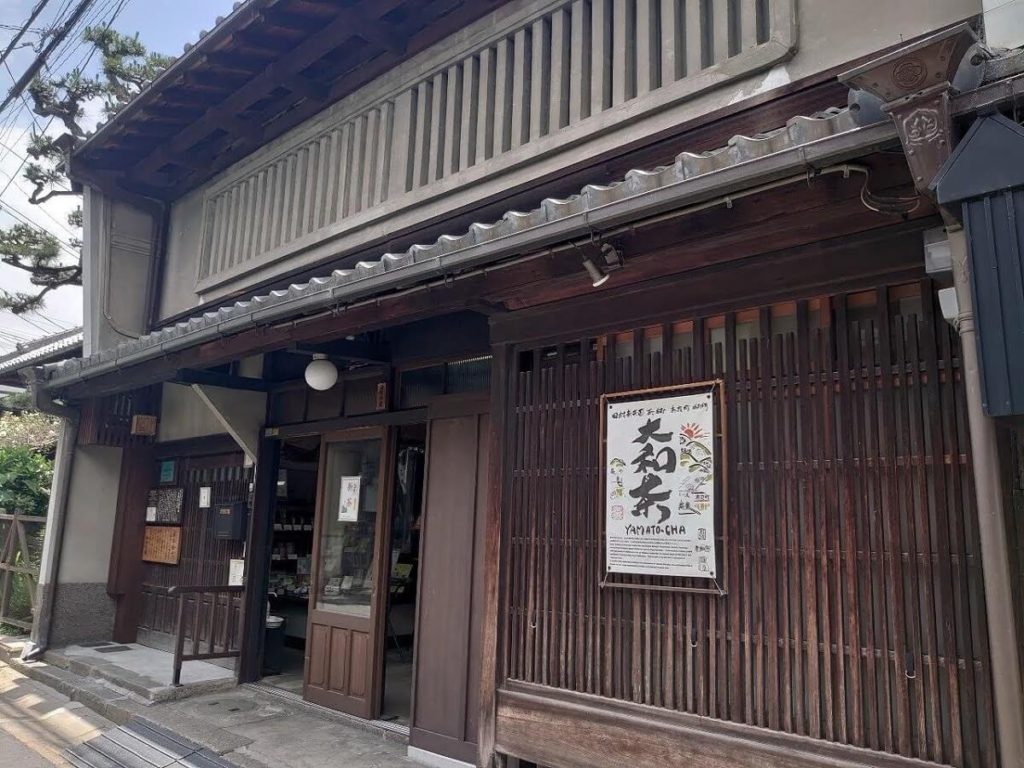

I was suddenly lured into the tea shop Tamura Seihouen chaho by the aroma of delicious, rich tea. You can buy delicious Yamato-cha (tea) here. One machine that caught my attention in particular is a tea roasting machine. The owner told us that he has been roasting delicious hoji-cha every day since 1958 with this single machine. The aroma is so strong that I didn’t want to move but smell it forever! The aroma and taste of this hoji-cha is so good that it is served in JAL’s first class as well as used in some French sweets. And another fun fact is that this shop building was built in the end of the Edo period, in the 1800s, and is one of the registered tangible cultural properties. If you’re around and don’t buy Yamato-cha, especially hoji-cha here, you may regret it later.
◎Tips about Yamato-cha
Yamato-cha is a type of tea produced in Nara and grown in mountainous areas rich in nature, such as the Tsukigase and Tahara areas of Nara City.
It is said to have its origins in ancient times, when Kobo Daishi brought back seeds from Tang Dynasty China and cultivated them in Uda, Nara over 1,200 years ago. Yamato-cha is produced in the Yamato Plateau, where the climate is ideal for tea cultivation. Tea which is grown in a climate that is hot in the morning and cold in the evening has a rich umami flavor, and the monks of Todaiji and Kofukuji temples tried to make porridge with this tea. This was the beginning of Yamato tea porridge. It is still richly cultivated mainly in the mountains of Yamato Plateau, the northeast of Nara.
☆Go down and cross the Naramachi Odori street, and a little further on, you can see …
6.Nigiwai-no-ie にぎわいの家
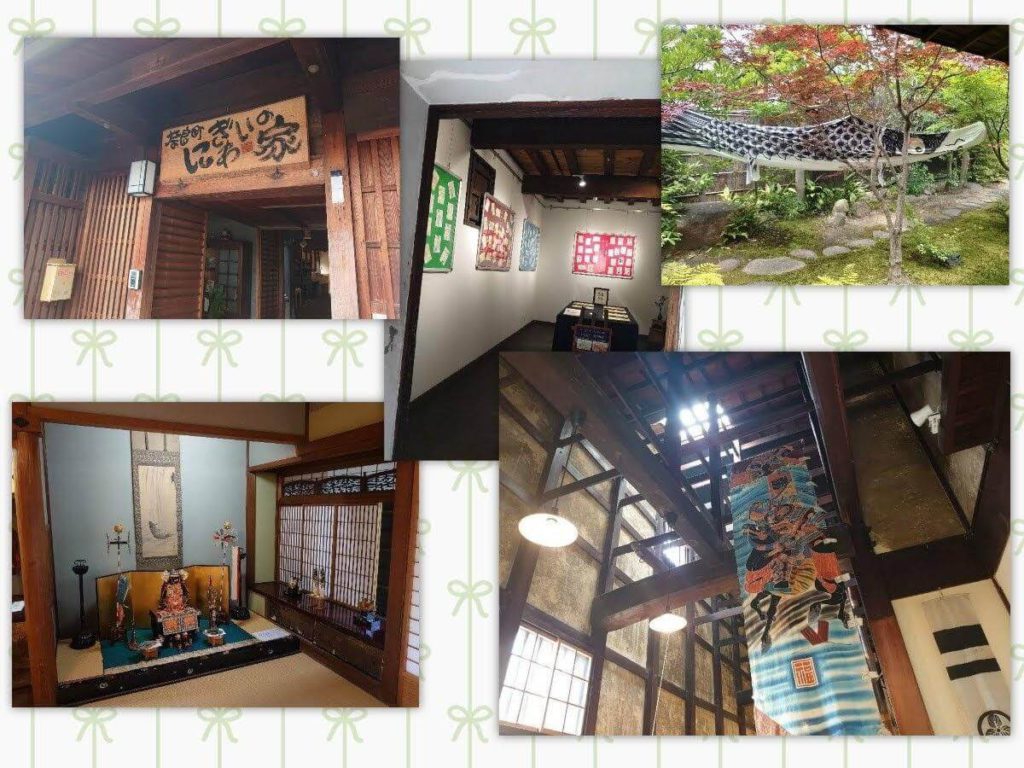
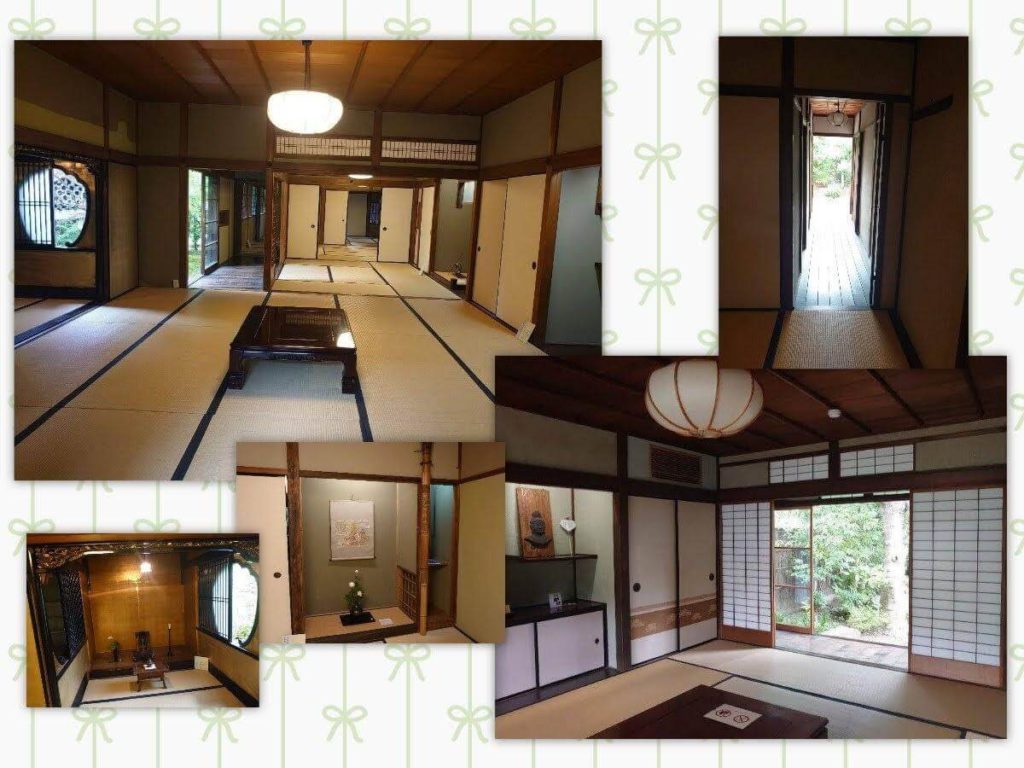
It is a traditional trademen’s house, built in 1917. You can enjoy a relaxing time in a wonderful Japanese old style house. Also, this place provides many events related to Japanese traditional seasonal events. For Japanese people, it’s very important that people pray for one’s health and safety through these events. It’s a must go place. I really love this place!!
7. Yoshino-Kuzu Sakura 吉野葛佐久良
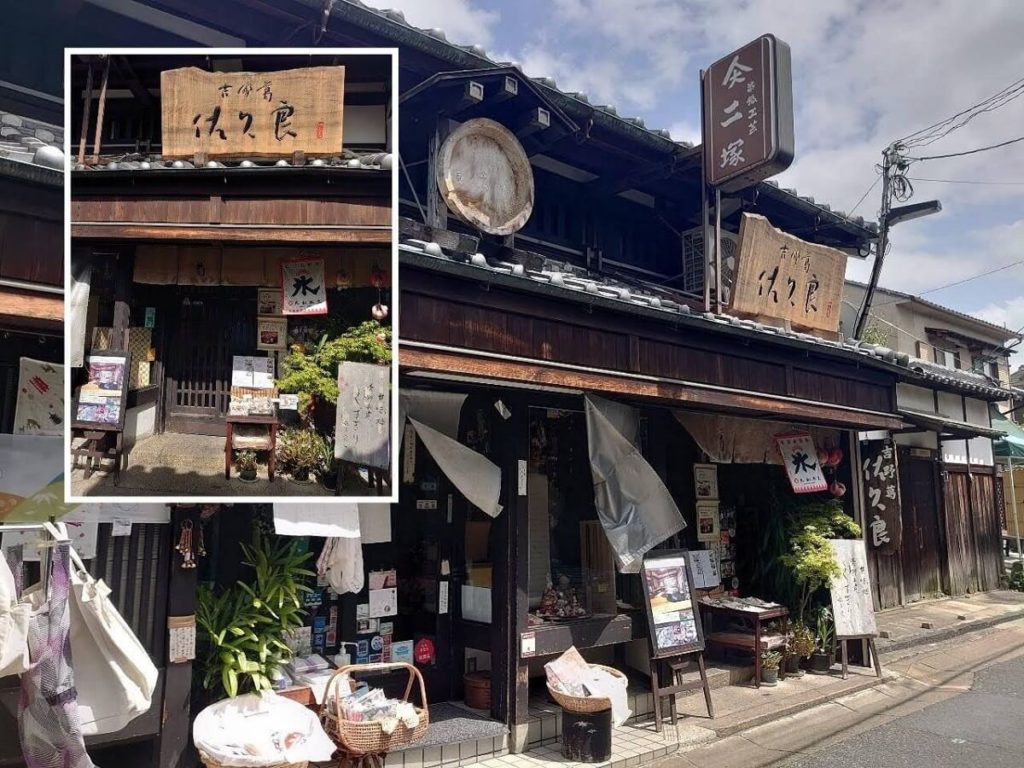

This specialty Yoshino-Kuzu store was created by the owner of the textile store who loved kuzu so much that he had to open it. Yoshino-Kuzu is made from kuzu starch extracted from kuzu root, and manufactured and refined in the Yoshino region and surrounding areas. You can spend a wonderful time in the quaint atmosphere of an over 160 year old building while eating Yoshino-Kuzu sweets. You can also buy and bring this back home as Nara’s speciality souvenir.
My strolling tour ends here. Did you enjoy it? I found all the stores I visited this time by strolling by myself. There are so many wonderful stores in Nara-machi we can discover, and I have many more stores I’d like to introduce. It is a perfect town where you can enjoy the old townscape with its mixture of traditional crafts and modern art on your two feet. Enjoy Nara!!
Thank you.
I’m a clay artist, and a master of Japanese calligraphy “Onore-sho”. I have my own shop in Ikaruga town, Nara, which is near Horyuji temple: world heritage site. And I’m a volunteer English tour guide. I enjoy learning English everyday.



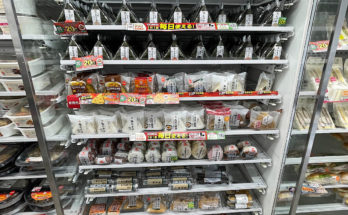

 HTJ has a YouTube page! Check it out
HTJ has a YouTube page! Check it out